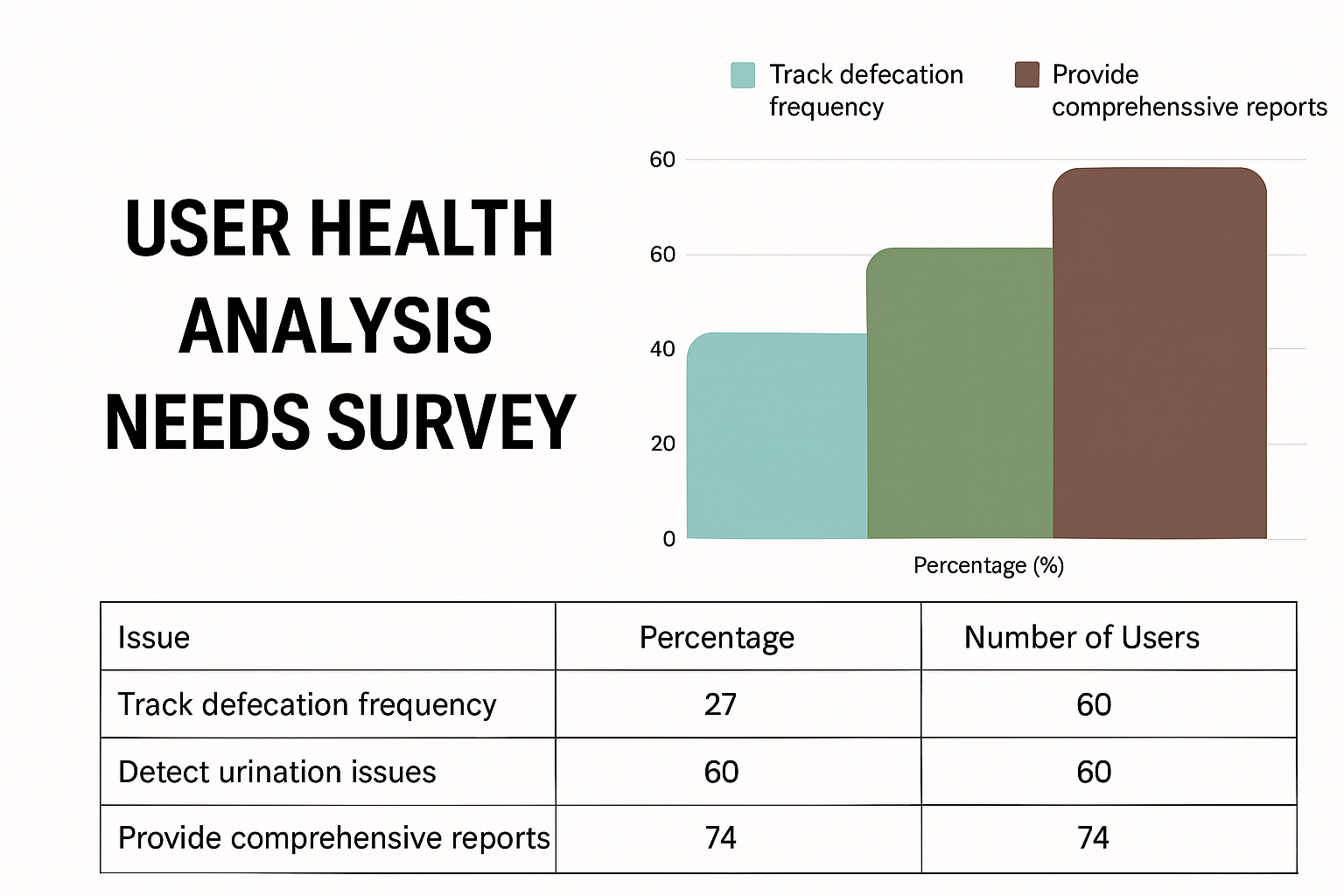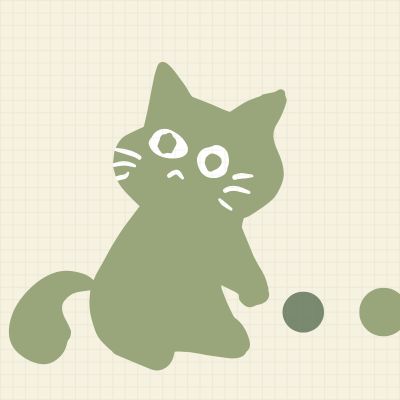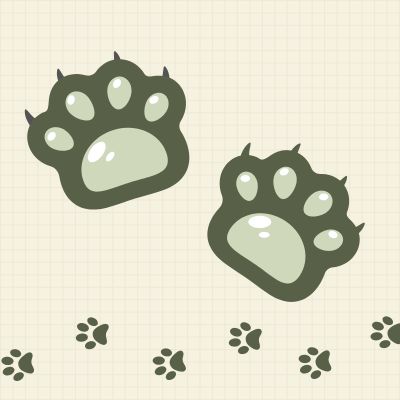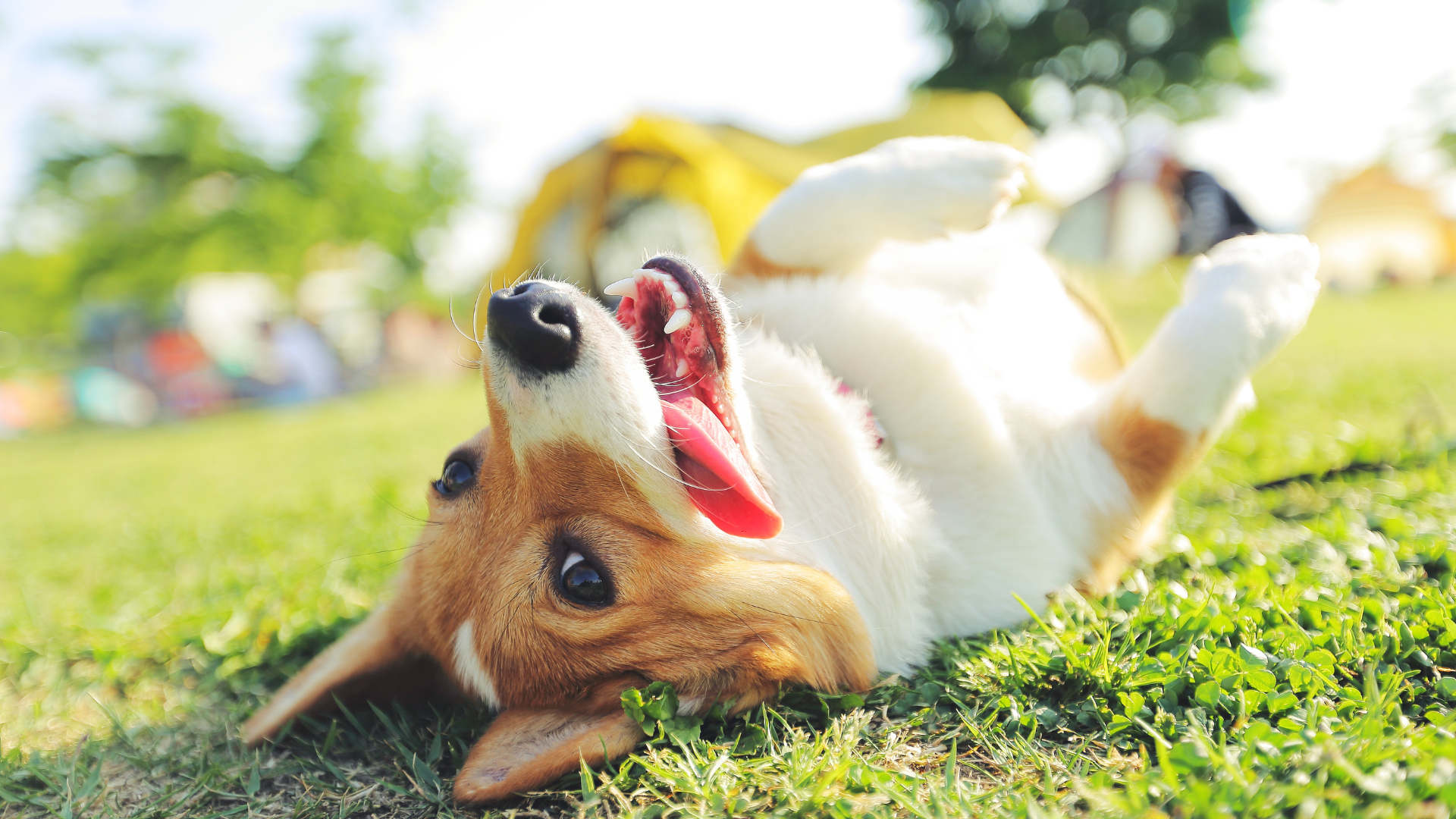
Run Wild, Live Free
Learn More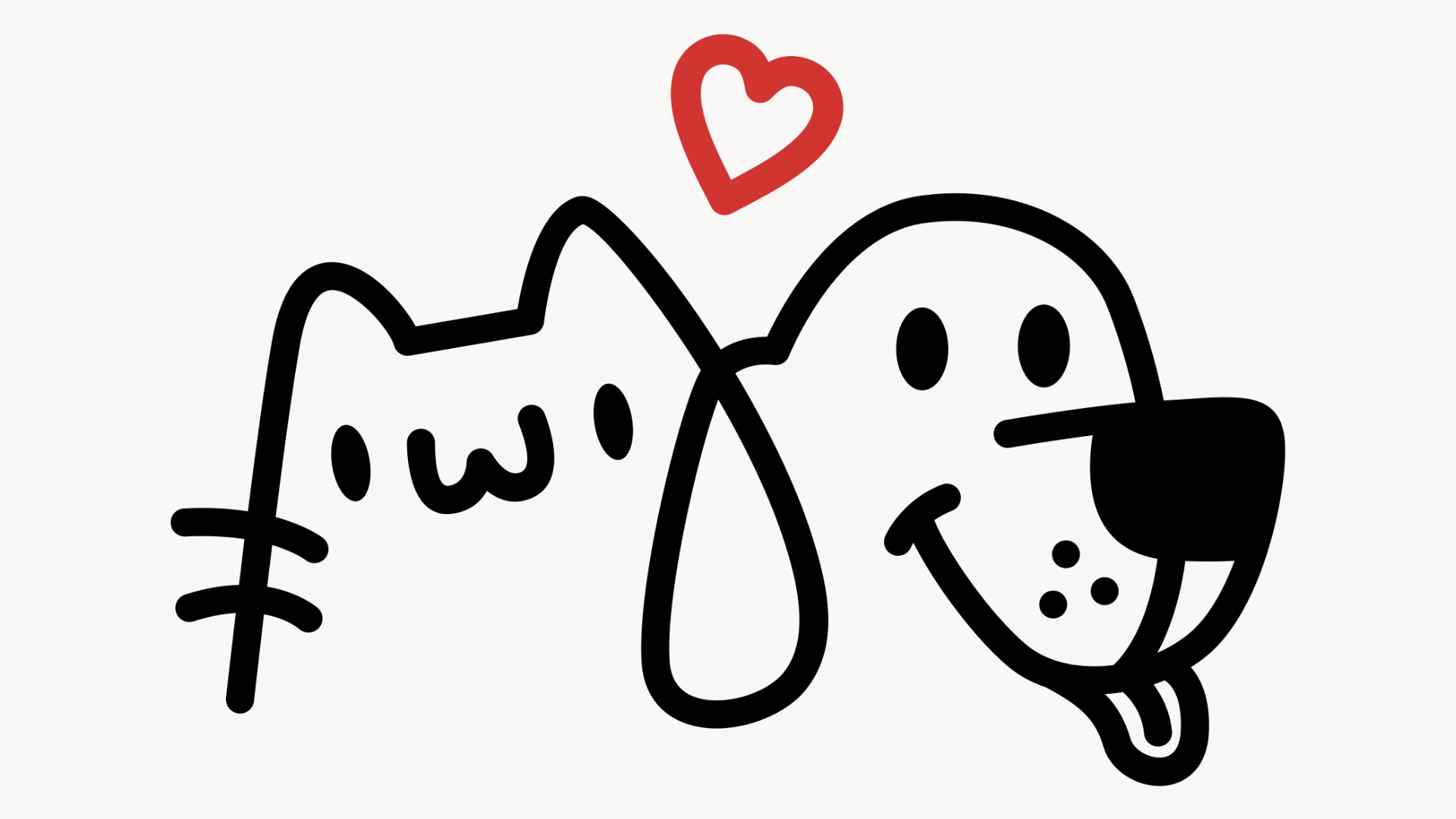
Nature’s Little Friends
Survey Results
Part 1: Basic Information
Age Survey
As shown in the chart, the majority of respondents are under 18 years old, accounting for over half (54%) of the total, with 87 participants.

Question 1: Do you own a cat?
As shown in the chart, 49% of respondents (79 people) own a cat. The 51% who do not have a cat could be potential future pet owners with plans to adopt one.

Part 2: Pet Owners' Care Habits
Question 2: What challenges do you face when taking care of your cat? (Multiple choices allowed)
As shown in the chart, "time-consuming cleaning" is the biggest challenge (39% / 63 people). Nearly 40% of cat owners find cleaning the litter box tedious and labor-intensive, highlighting a high demand for automated cleaning solutions.
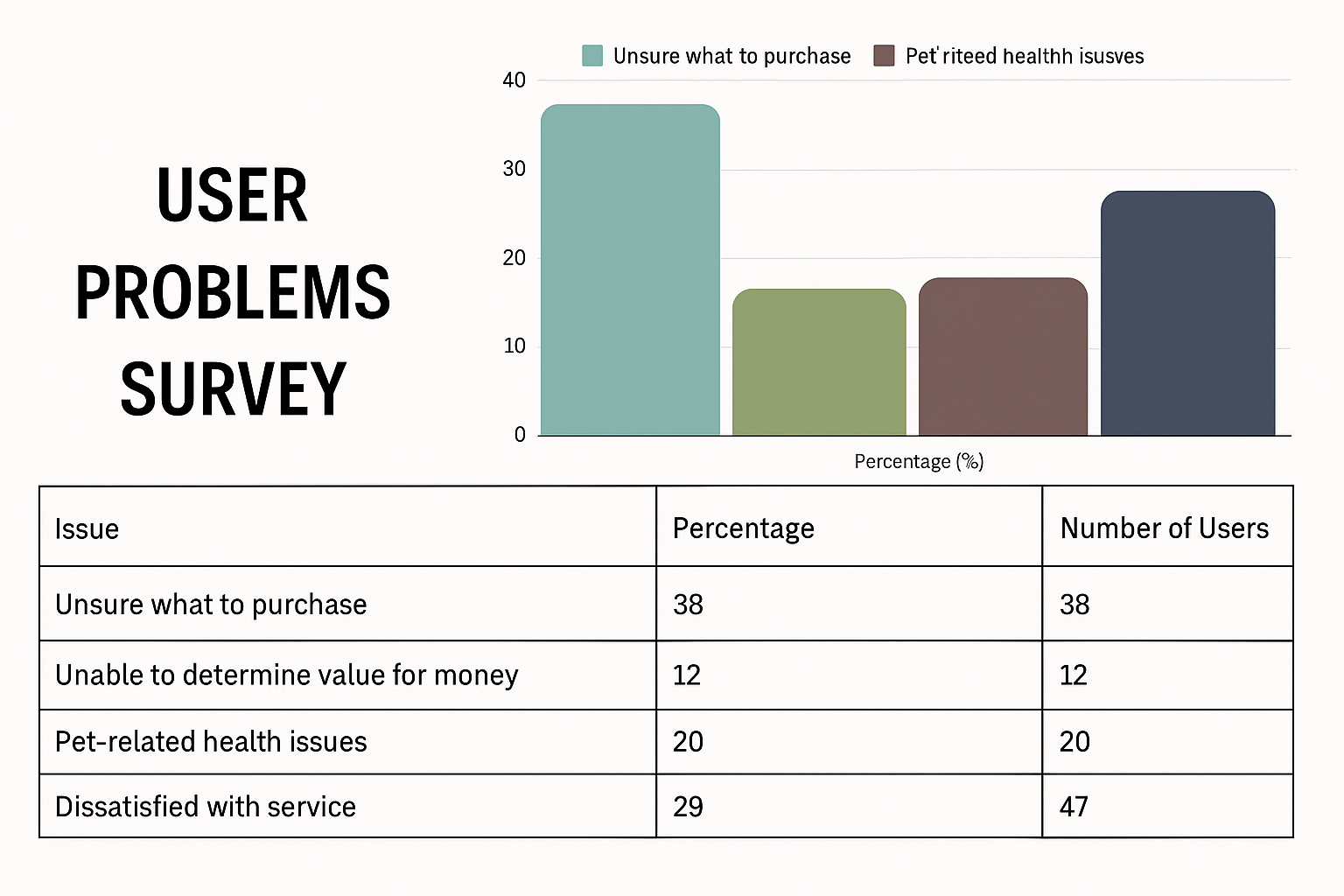
Question 3: How familiar are you with smart litter boxes on the market?
To provide accurate health monitoring, our team has integrated cameras and image analysis technology to design a smart litter box with health assessment features. With the help of technology, cat owners can track their pet’s health in real time and receive instant alerts, making pet health management smarter and more efficient.
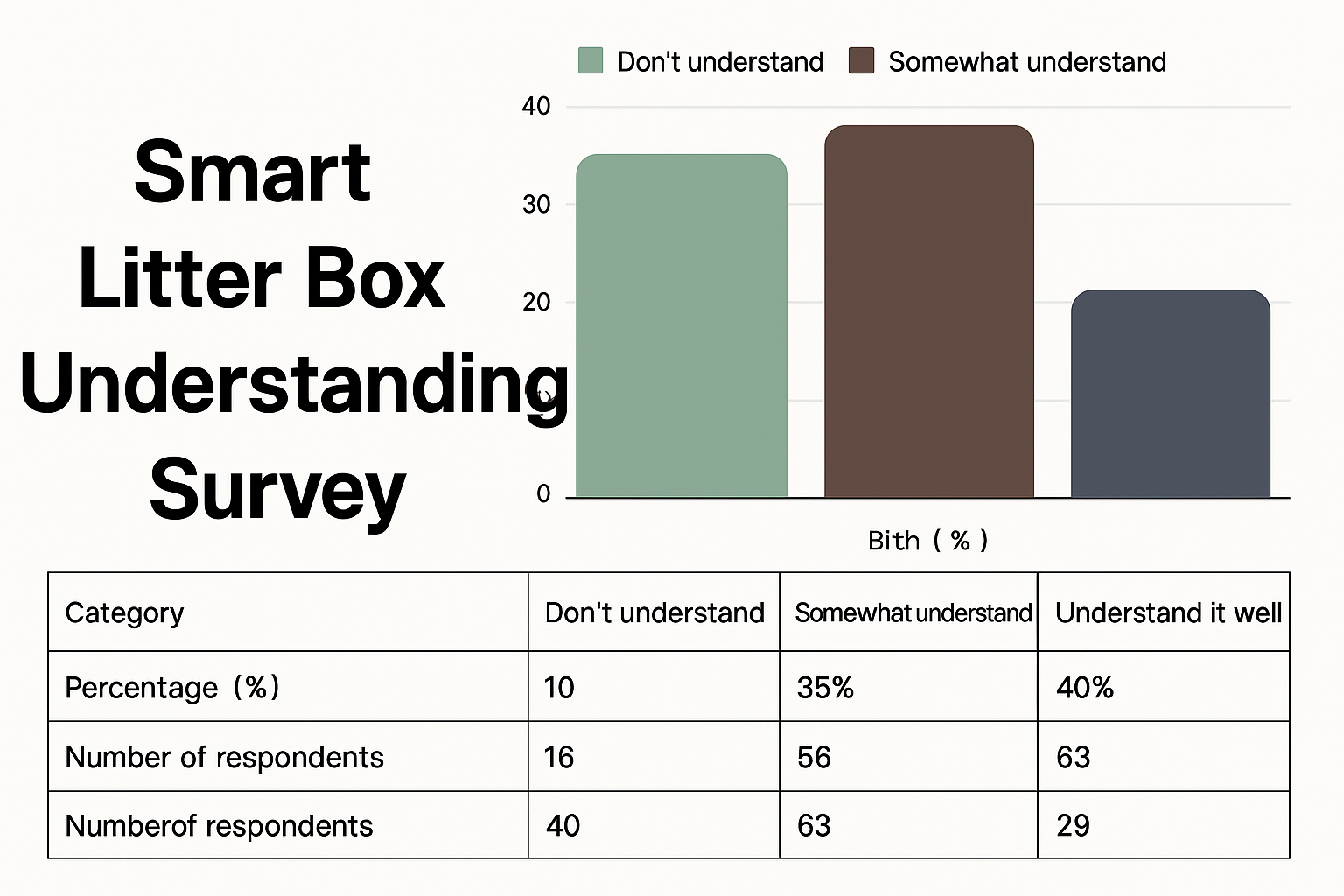
Part 3: Needs and Expectations for AIoT Smart Litter Box
Question 4: What are your thoughts on the smart litter boxes available on the market?
As shown in the chart, 41% (66 people) believe that smart litter boxes cannot effectively detect cat health conditions, 29% (47 people) find them inconvenient to use, 23% (37 people) think they are too expensive, and 7% (12 people) feel the features are not advanced enough.
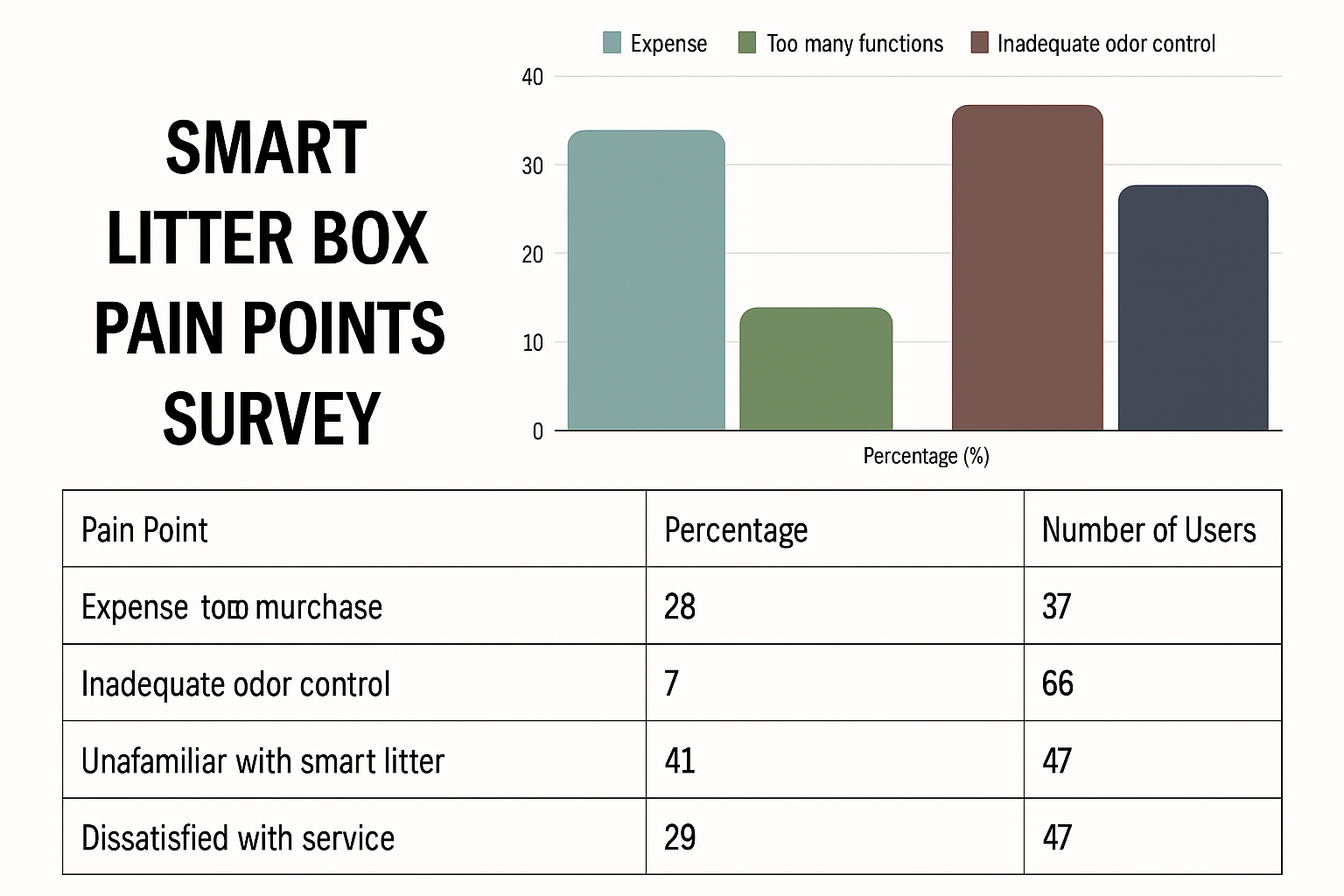
Question 5: What price range are you willing to accept for a smart litter box?
As shown in the chart, 45% (73 people) prefer a price range of NT$3,000 - 5,000, 35% (57 people) prefer below NT$3,000, and 12% (19 people) are willing to pay NT$5,000 - 8,000. This indicates that most consumers are comfortable with a mid-range priced smart litter box.
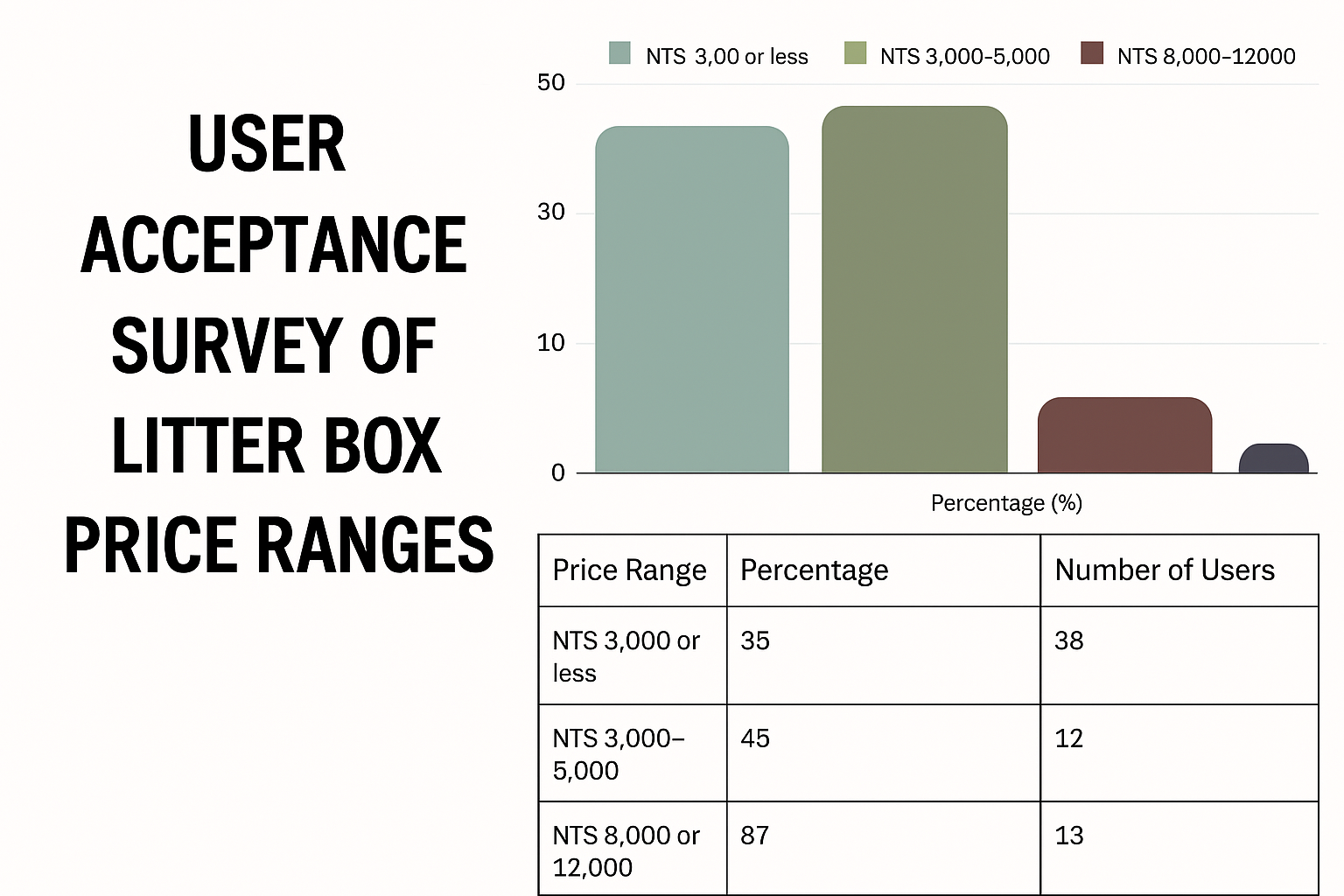
Part 4: Product Satisfaction and Market Acceptance
Question 6: How would you rate the importance of different features based on your experience?
As shown in the chart, 40% (65 people) consider "cat health detection" the most important feature, 32% (52 people) prioritize "automatic litter cleaning", 16% (26 people) want real-time monitoring via LINE Bot, and 12% (19 people) prefer a safety feature to prevent cats from approaching during operation.
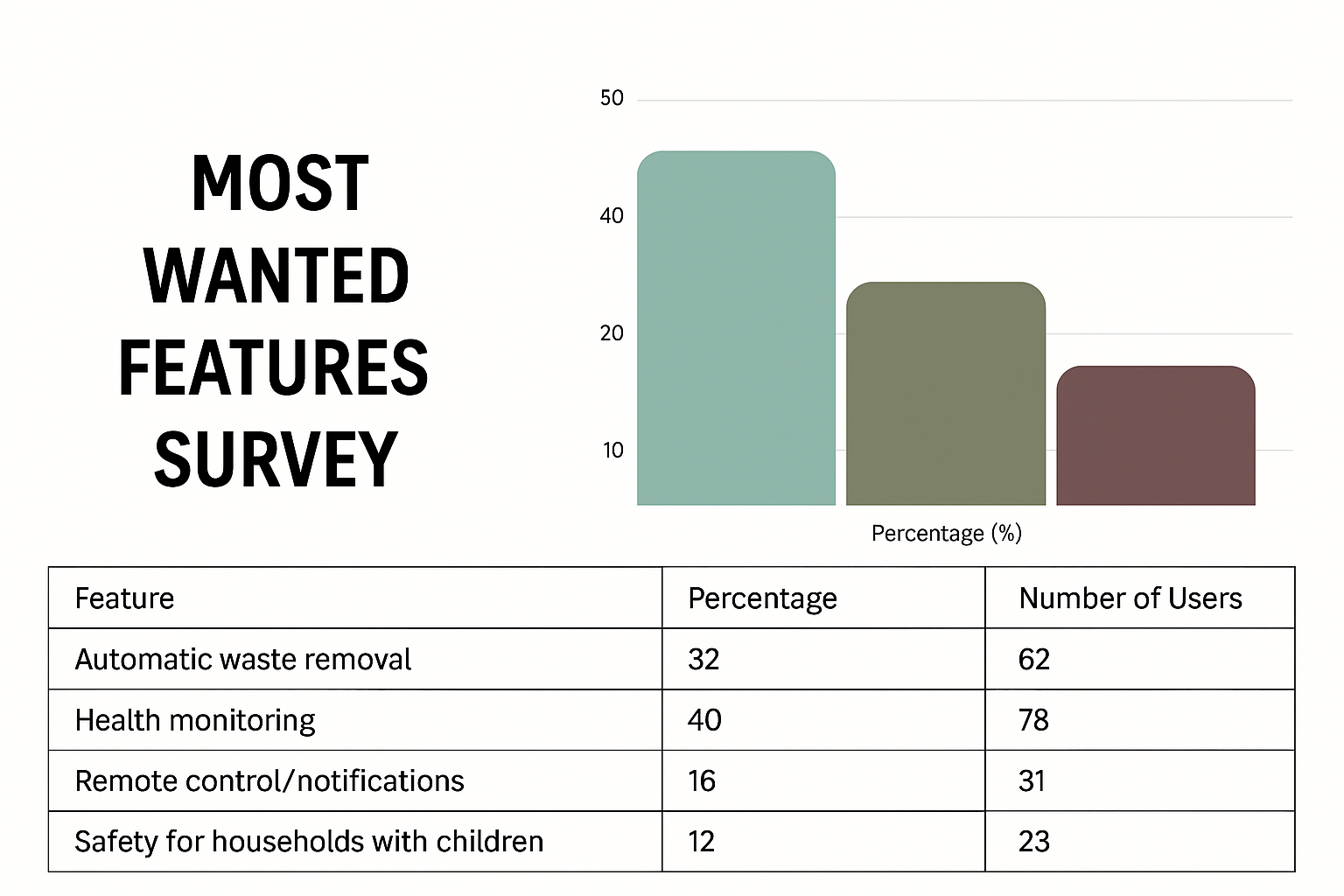
Question 7: What are your needs for the health monitoring features of a smart litter box?
As shown in the chart, 60% (97 people) want a comprehensive health report, 24% (39 people) prefer photo-based health detection, and 16% (26 people) are interested in tracking the frequency of their cat’s excretion.
